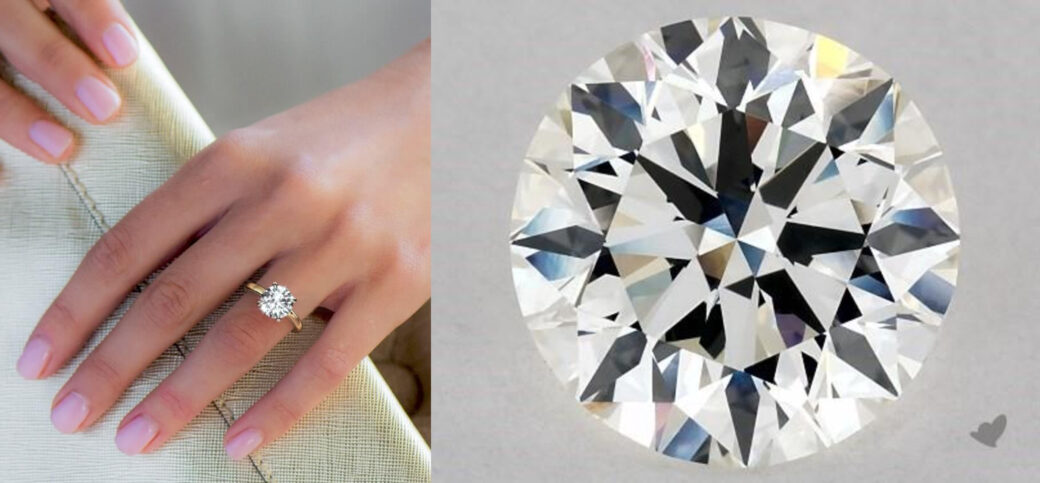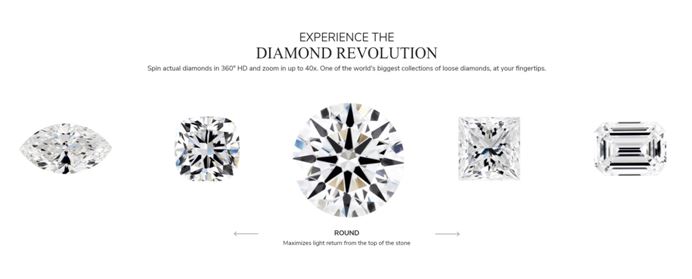The value of a 3-carat diamond, similar to diamonds of other sizes, varies based on the Four Cs: cut, color, clarity, and carat weight. As of my last update in January 2022:
- A 3-carat diamond of average quality might range between $10,000 to $30,000.
- A high-quality 3-carat diamond, with an excellent cut, minimal inclusions (high clarity), and a desirable color (closer to colorless), can range from $30,000 to over $100,000 or even more.
- Diamonds of lesser quality characteristics can be available for less than $10,000.
However, keep in mind the following:
- Price Per Carat Increases with Size: As diamonds increase in size, the price per carat generally goes up. This is because larger diamonds are rarer than smaller ones. So, a 3-carat diamond doesn’t just cost three times the price of a 1-carat diamond; the cost per carat can be significantly higher.
- Retailer Markups: Different retailers have different markups. High-end brands can charge a premium for their diamonds.
- Certification Matters: Always check for a diamond’s certification from reputable labs (like GIA or AGS) to ensure you’re getting an accurate assessment of its quality and value.
- Market Fluctuations: The prices of diamonds can vary based on economic conditions, mining outputs, and market demand.
Understanding the Value of a 3-Carat Diamond
When it comes to luxury and brilliance, diamonds stand in a league of their own. Within the world of these sparkling gems, the 3-carat diamond is especially coveted, striking an exquisite balance between size, rarity, and elegance. But a pertinent question looms for both connoisseurs and curious observers: How much is a 3-carat diamond genuinely worth? To shed light on this topic, we’ll delve into expert opinions, explore the intricacies of diamond valuation, and present a comprehensive guide to the worth of a 3-carat diamond.
A Primer on Diamond Valuation
The foundation of diamond valuation lies in the renowned Four Cs: Cut, Color, Clarity, and Carat Weight. Each C plays a critical role in determining the diamond’s worth, interacting in complex ways to give the gem its final price tag.
Cut:
While often mistaken to mean the shape of the diamond, the cut truly refers to how well the diamond has been sculpted from its rough form. The cut affects its brilliance, fire, and scintillation.
Color:
Diamonds are graded on a color scale from D (colorless) to Z (visible yellow or brown hue). Closer to the D end of the spectrum generally translates to a higher price.
Clarity:
This metric assesses the presence of internal (inclusions) or external (blemishes) imperfections in the diamond. Flawless diamonds are the rarest and command premium prices.
Carat Weight:
While our focus is on the 3-carat diamond, it’s the interplay of this weight with the other Cs that shapes its price.
The Esteemed Perspective on the 3-Carat Diamond
Dr. Elisa Warren, a globally renowned gemologist, shared her insights, “The allure of the 3-carat diamond lies in its significant size which doesn’t border on extravagance. From a value standpoint, as diamonds increase in size, their price per carat also escalates, making them exponentially pricier.”
To give a ballpark figure, as of January 2022:
- An average quality 3-carat diamond could be priced between $10,000 to $30,000.
- Exceptional stones, boasting superior cut, clarity, and color, might range from $30,000 to over $100,000.
Jacob Allen, a seasoned diamond merchant, emphasized the influence of provenance. “Beyond the Four Cs, the origin of the diamond, especially if it’s from famed mines or possesses historical significance, can accentuate its price.”
Factors Affecting the Diamond’s Worth
- Market Dynamics: Diamonds, akin to other commodities, respond to supply-demand dynamics, geopolitical events, and broader economic trends.
- Retailer and Branding: Prices can be influenced by the brand selling the diamond. Premium brands often have higher markups.
- Certifications: As Laura Daniels, an acclaimed jewelry historian, elucidates, “Certifications, especially from reputed labs like GIA or AGS, not only assure buyers of the diamond’s quality but can also bolster its resale value.”
Pros of a 3-Carat Diamond:
- Stunning Size: A 3-carat diamond is impressive in size. It offers a significant visual impact, making it a head-turner and a conversation starter.
- Investment Potential: Given its rarity, a 3-carat diamond, especially one of high quality, can serve as a valuable investment, potentially appreciating over time.
- Symbol of Affluence: Such a substantial diamond is undeniably a mark of luxury and can be perceived as a symbol of success and affluence.
- Versatility in Design: Due to its size, a 3-carat diamond offers designers more room for creativity, resulting in unique and intricate jewelry pieces.
- Memorable Gift: Whether it’s an engagement ring, an anniversary gift, or a special token of love, a 3-carat diamond makes for an unforgettable present.
Cons of a 3-Carat Diamond:
- Considerable Cost: Unsurprisingly, a diamond of this size comes with a hefty price tag. This high cost can be prohibitive for many potential buyers.
- Practicality Concerns: Depending on one’s lifestyle and daily activities, wearing a 3-carat diamond regularly might not be practical. There’s a heightened risk of it getting caught in clothing or potentially being damaged.
- Potential for Ostentation: While many adore its size, some might find a 3-carat diamond overly showy or ostentatious, especially in certain social or professional settings.
- Requires Detailed Research: Given the significant investment, buyers need to be extremely diligent about the diamond’s quality. A thorough understanding of the Four Cs and a certified gemologist’s consultation become essential.
- Security Concerns: Owning such a valuable piece might necessitate additional security measures, like insurance or safe storage, adding to ongoing costs.
In Conclusion
A 3-carat diamond’s worth is a synthesis of its inherent qualities, its historical and cultural context, and the market’s current pulse. Potential buyers are urged to deepen their understanding, consult experts, and make a purchase that resonates with both their aesthetic desires and practical considerations. After all, a diamond’s true value often transcends its price, embedded in the stories it carries and the emotions it evokes.

